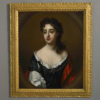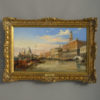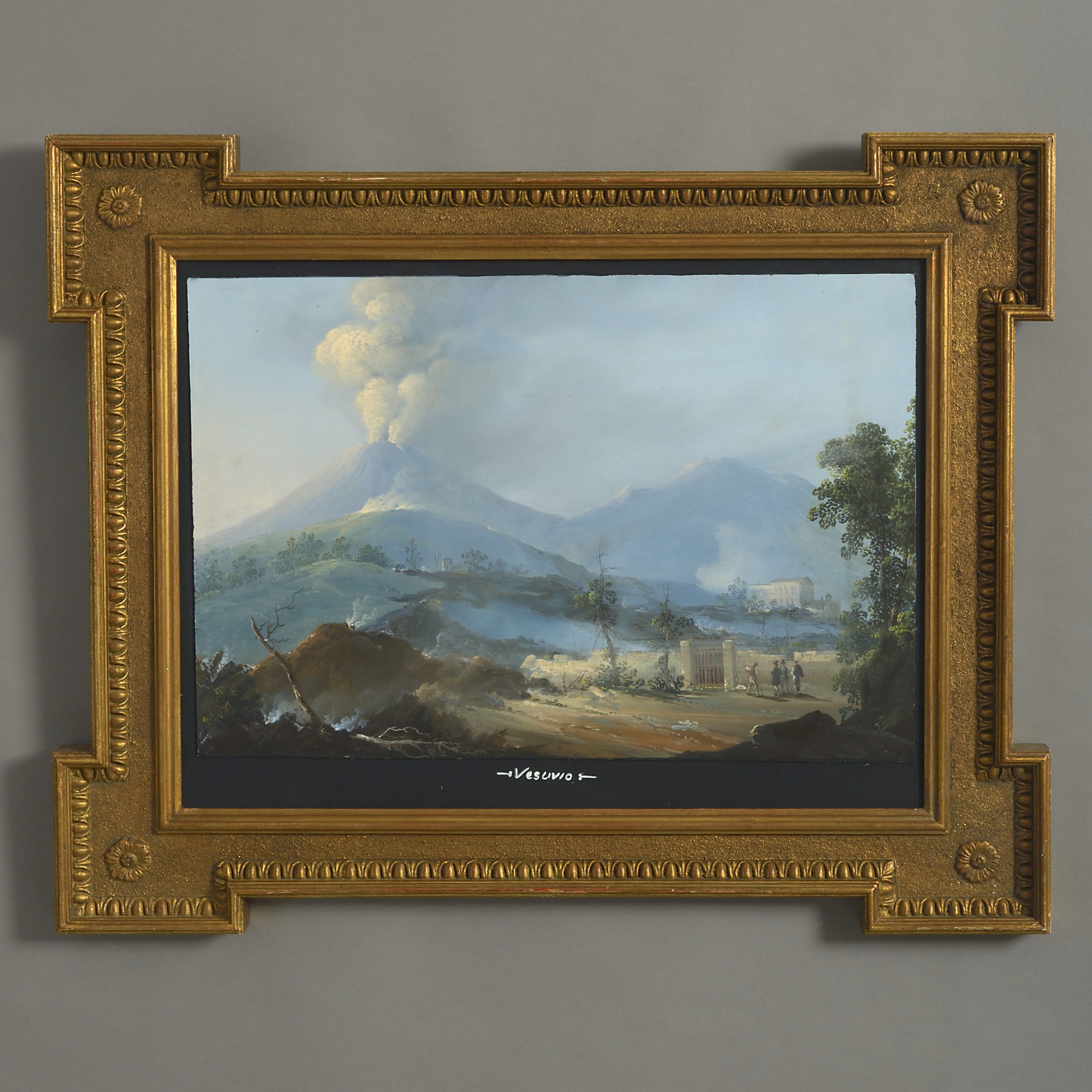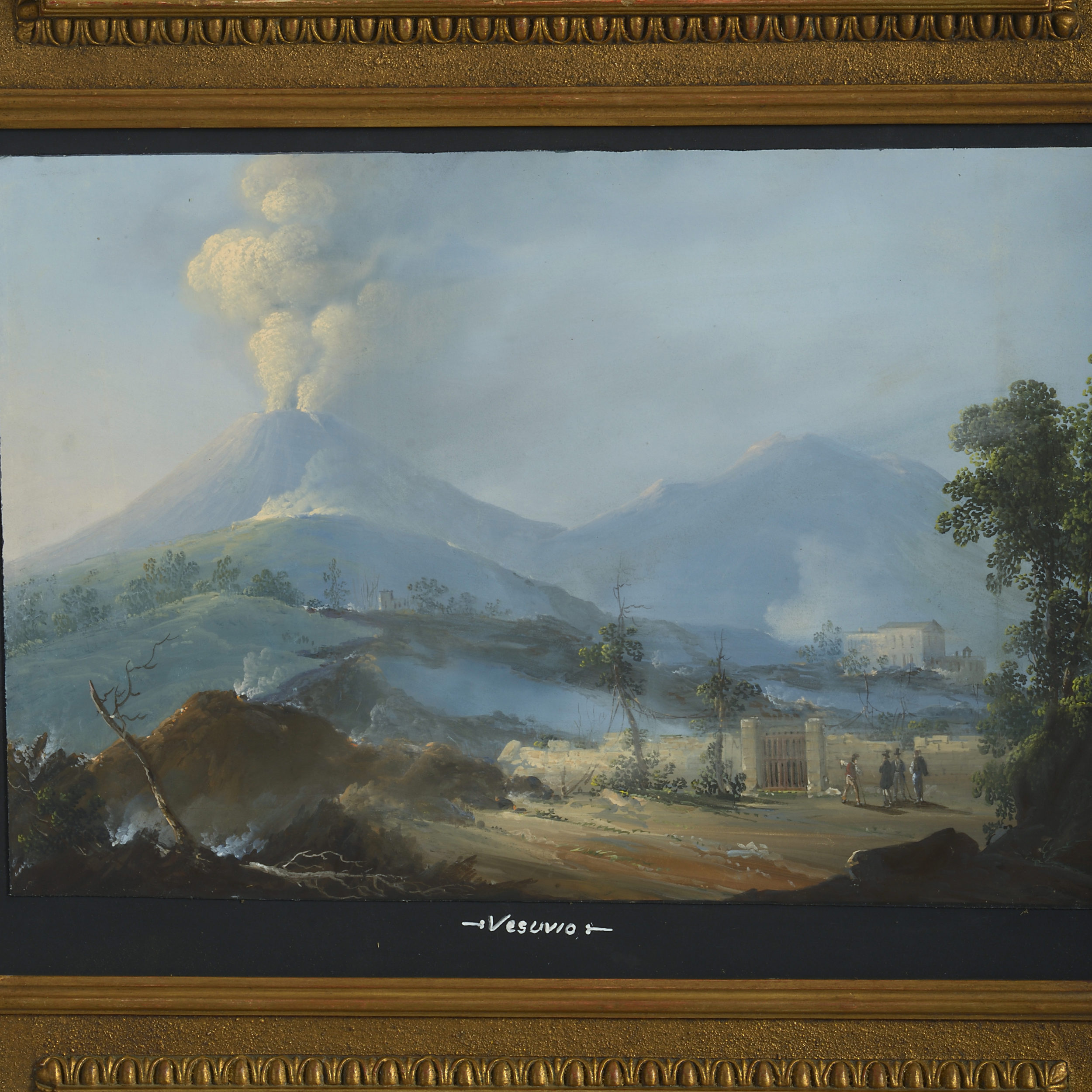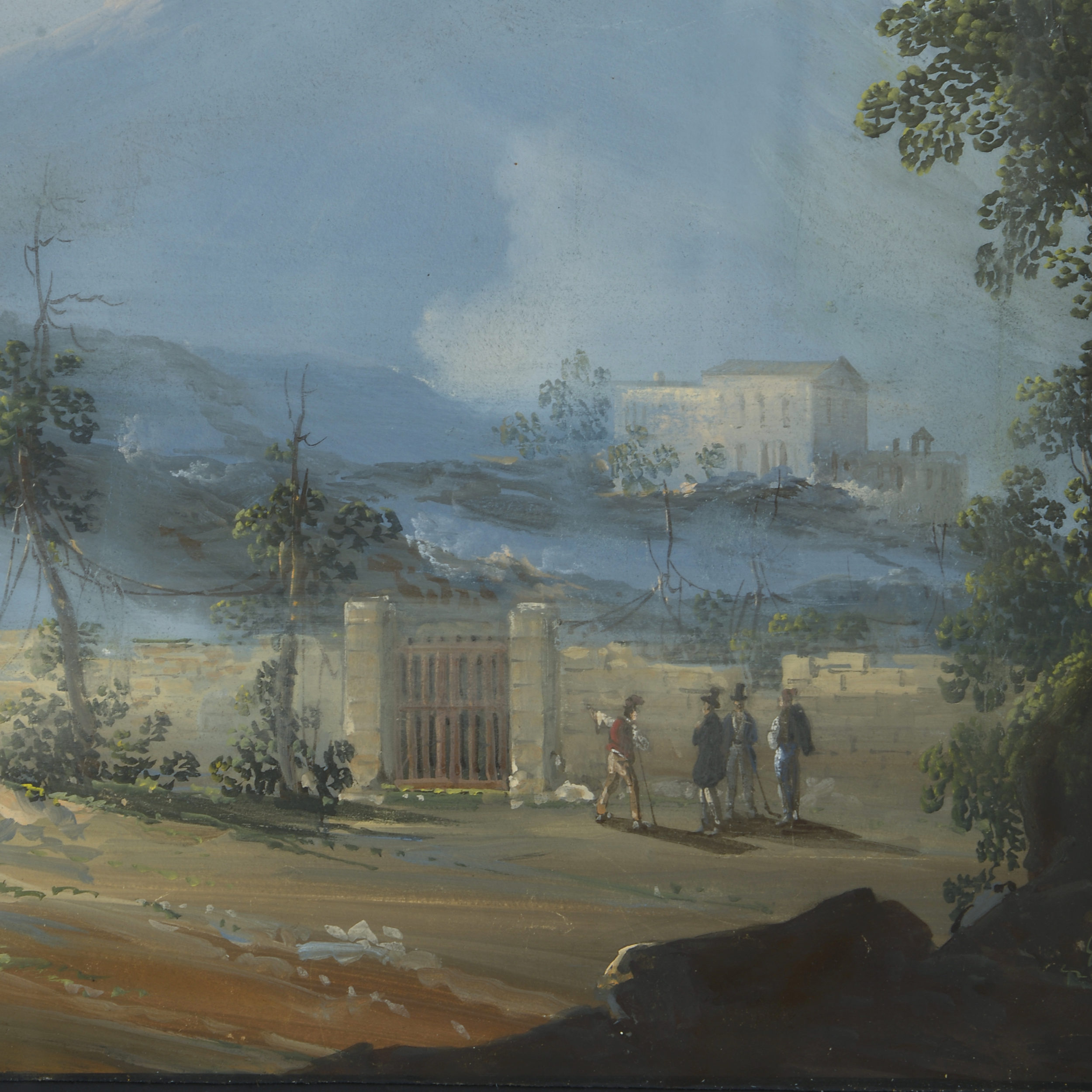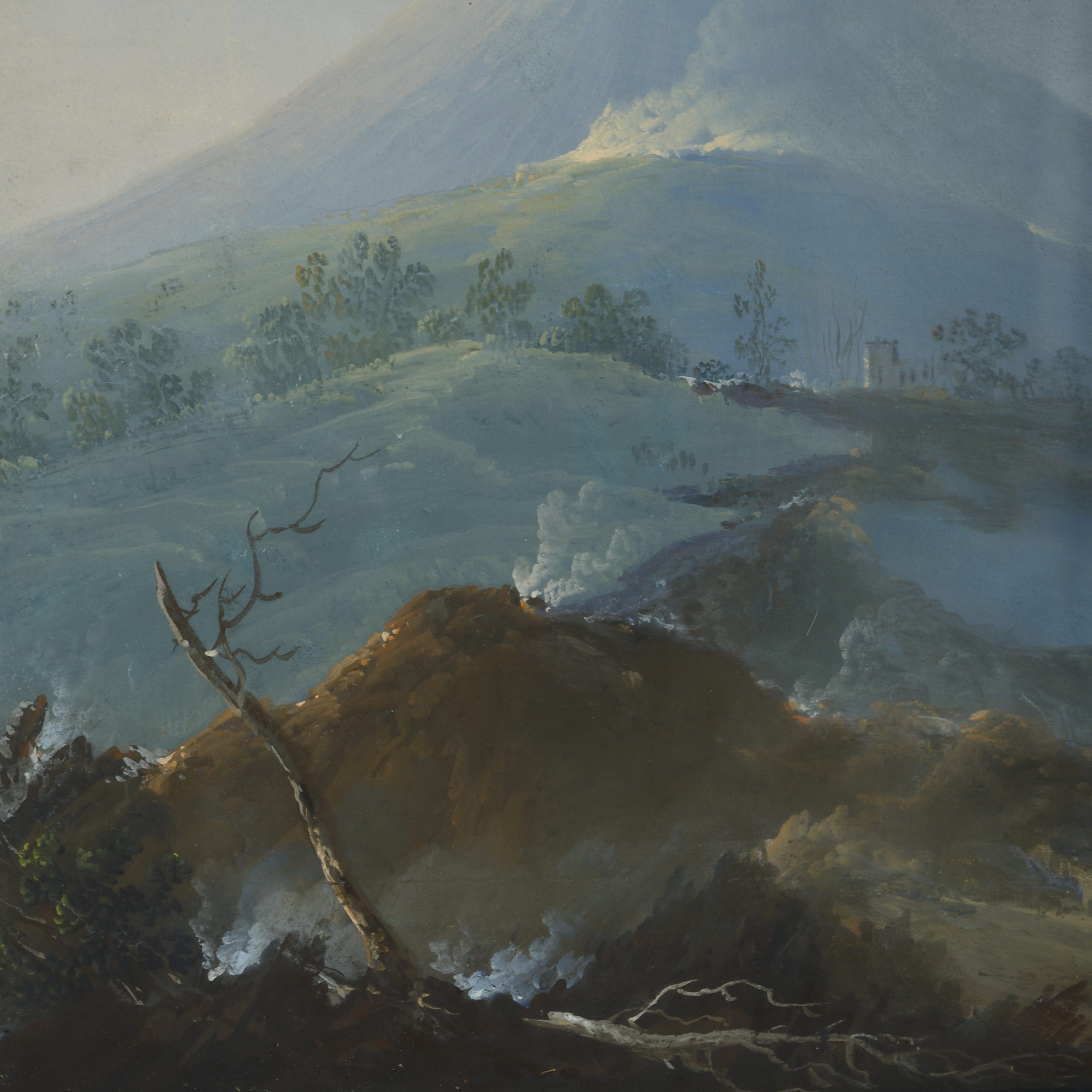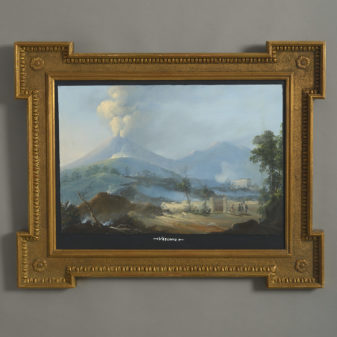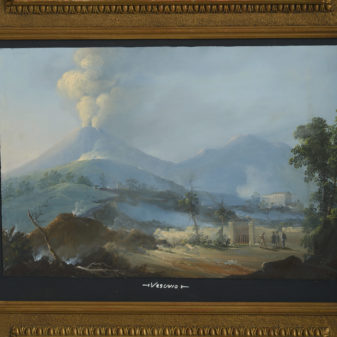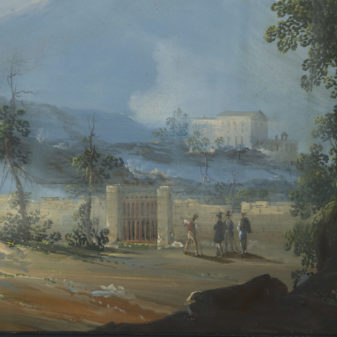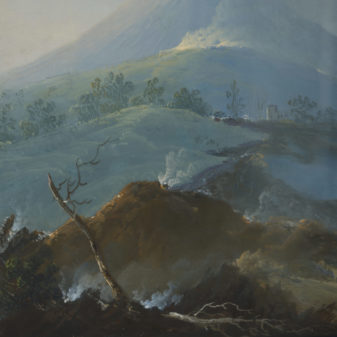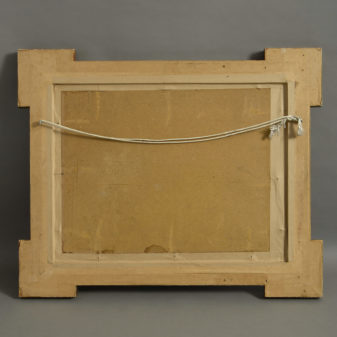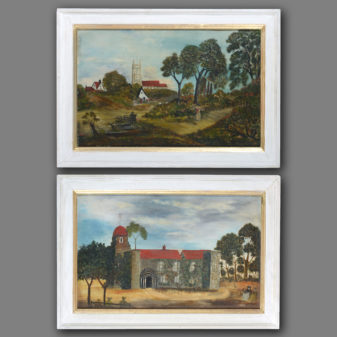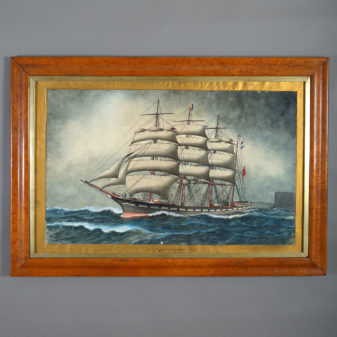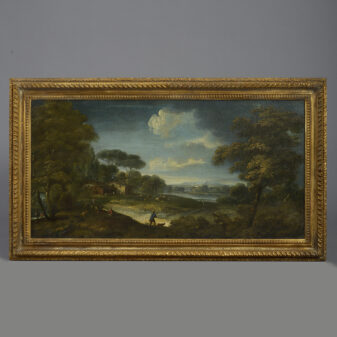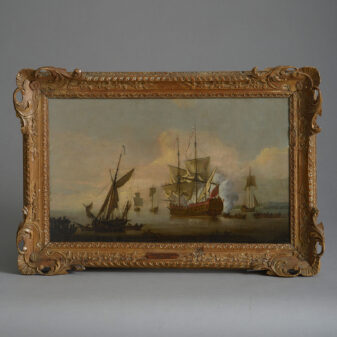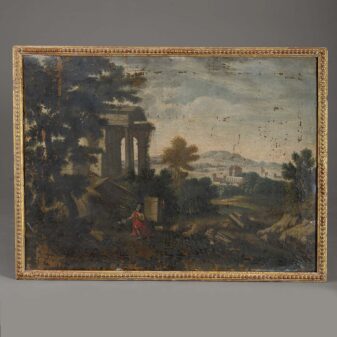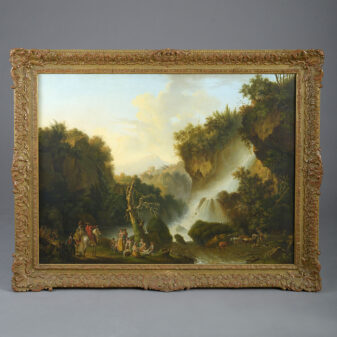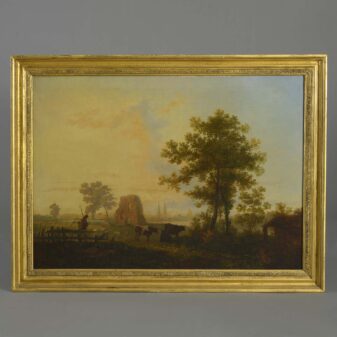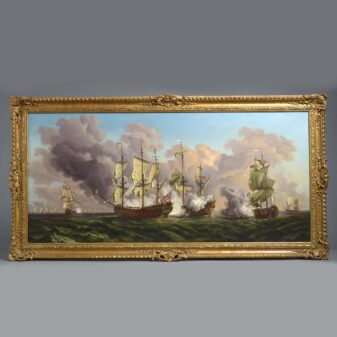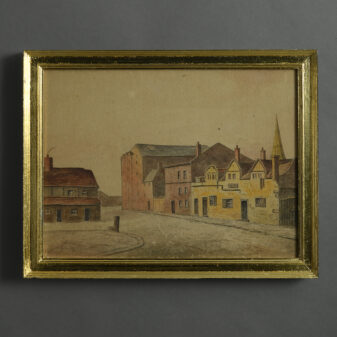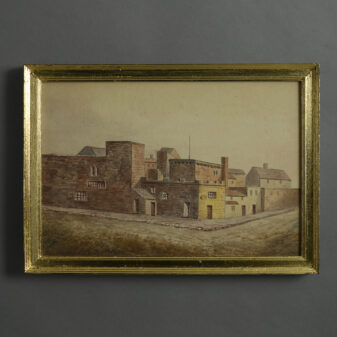Circa 1830 Italy
Neapolitan School, A 19th century View of Vesuvius
£3,500
SOLD
Height 26 1/2 inches (67.5 cm)
Width 21 1/2 inches (83 cm)
Depth 2 inches (5 cm)
Neapolitan School, 19th century
A View of Mt. Vesuvius
Gouache on card; held in a Kent Palladian style gilded frame
Provenance: A Country House, Oxfordshire, England
Mount Vesuvius forms a dramatic backdrop to the Bay of Naples, Italy, and is one of Europe’s most active volcanoes. It is best known for an eruption in AD 79 that buried the Roman settlements of Pompeii and Herculaneum under molten ash. Vesuvius has not erupted since 1944, but from the seventeenth to early twentieth centuries, frequent eruptions sent incandescent plumes of ash into the sky and rivers of lava rolling down the mountain side.
In 1631, Vesuvius burst violently back to life with a tremendous eruption that could be heard for miles around. For the next three centuries, activity oscillated between vigorous pulses of eruption, with fire fountains, ash columns and lava flows, and short periods of quiet steaming
In the late seventeenth century, Vesuvius became a prominent destination for visitors on the Grand Tour. In 1688, William Bromley, later MP for Oxford and speaker of the House of Commons, waded for miles through knee-deep ash to reach the active cone. ‘The mountain is always on fire, and near it are huge stones…of incredible lightness’ he wrote.
The discovery of the buried cities of Herculaneum and Pompeii in the mid-eighteenth century added to interest in Vesuvius, and the steady flow of wealthy tourists created a demand for paintings of the Bay of Naples and of Vesuvius.
Local artists produced small quickly executed works on paper whilst more established painters often finished larger scale pictures in the studio. The broad view presented here is both delicately finished and striking, depicting some noble tourists, perhaps about to embark on the arduous ascent with a guide. The vast scale and majesty of the smouldering volcano is adeptly rendered in gouache and was probably completed as a “grand tour “memento for a 19th century English tourist.

